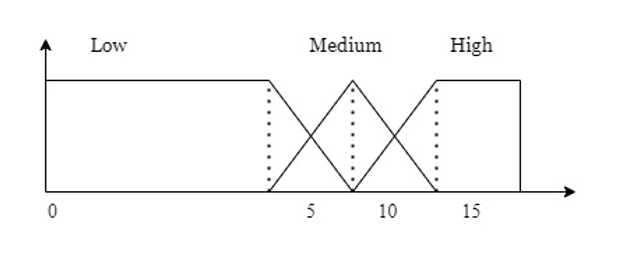The Tahani fuzzy logic method for detecting violence against women in North Sumatra
DOI:
https://doi.org/10.12928/bamme.v4i2.11627Keywords:
fuzzy logic, Tahani fuzzy logic method, violence against womenAbstract
Violence against women is a pervasive issue in society. Violence often encompasses various forms, such as physical, psychological, economic, and sexual violence. This research employs the Tahani fuzzy logic method to predict cases of violence against women. The results of the analysis in query fuzzification indicate that there are 16 districts experiencing high number of cases of violence against women, namely: Asahan, Batu Bara, Dairi, Deli Serdang, Karo, Binjai, Gunung Sitoli, Pematang Siantar, Tanjung Balai, Labuhan Batu Utara, Labuhan Batu, Langkat, Padang Lawas Utara, and Simalungun. This research also provides recommendations based on detection results, utilizing the fire strength value as the highest-level ranking. Looking at the total 33 districts in North Sumatra, the highest level of violence against women is in Medan, which occurred from July to December 2022, where all four criteria for typical cases of violence against women are significantly high.
References
Abdullah, D., Djanggih, H., Suendri, S., Cipta, H., & Nofriadi, N. (2018). Fuzzy model Tahani as decision support system for employee promotion. International Journal of Engineering & Technology, 7(2).
Akhter, A., Uzzal, K. A., & Polash, M. M. A. (2019). Cyber bullying detection and classification using multinomial Naïve Bayes and fuzzy logic. International Journal of Mathematical Sciences and Computing, 5(4), 1-12. https://doi.org/10.5815/ijmsc.2019.04.01
Alhakim, A. (2021). Kekerasan terhadap perempuan: Suatu kajian perlindungan berdasarkan hukum positif di Indonesia. Jurnal Pendidikan Kewarganearaan Undiksha, 9(1), 115–122.
Maslim, M., Dwiandiyanta, B. Y., & Susilo, N. V. (2018). Implementasi metode logika fuzzy dalam pembangunan sistem optimalisasi lampu lalu lintas. Jurnal Buana Informatika, 9(1)11–20.
Nur, E., & Gernowo, R. (2015). Implementasi fuzzy model Tahani untuk perancangan sistem pendukung keputusan penerimaan taruna baru. Jurnal Sistem Informasi Bisnis, 5(1), 63–71.
Prasetio, W. D., Zahrroh, A., Khudri, A., Rizki, B., Izzati, A. R., Brantadikara, D., Informatika, P. S., Teknik, F., & Bengkulu, U. (2023). Implementasi fuzzy Tahani dalam sistem rekomendasi. Teknosia, 16(2), 41–54.
Sirait, J. A. (2018). Penerapan logika fuzzy dalam menentukan biaya pembangunan rumah pada PT Cipta Group menggunakan metode Mamdani. Dissertation. UP Batam.
Taufiq, G. (2016). Implementasi logika fuzzy Tahani untuk model sistem pendukung keputusan evaluasi kinerja karyawan. Jurnal Pilar Nusa Mandiri, 12(1), 12-20.
Wajid, M. S., Terashima-Marin, H., Paul Rad, P. N., & Wajid, M. A. (2022). Violence detection approach based on cloud data and Neutrosophic cognitive maps. Journal of Cloud Computing, 11(1), 85. https://doi.org/10.1186/s13677-022-00369-4.
Wijaya, H., Virginia, M., & Hakim, L. (2021). Penerapan fuzzy Tahani untuk pemilihan perangkat smartphone berbasis website berdasarkan kriteria membeli. Jurnal Teknik Informatika UNIKA Santo Thomas, 412-421.

Downloads
Published
Issue
Section
License
Copyright (c) 2024 Khairun NIsa, Rina Filia Sari

This work is licensed under a Creative Commons Attribution-ShareAlike 4.0 International License.
Authors who publish with this journal agree to the following terms:
- Authors retain copyright and grant the journal right of first publication with the work simultaneously licensed under Creative Commons Attribution License that allows others to share the work with an acknowledgement of the work's authorship and initial publication in this journal.
- Authors are able to enter into separate, additional contractual arrangements for the non-exclusive distribution of the journal's published version of the work (e.g., post it to an institutional repository or publish it in a book), with an acknowledgement of its initial publication in this journal.
- Authors are permitted and encouraged to post their work online (e.g., in institutional repositories or on their website) prior to and during the submission process, as it can lead to productive exchanges, as well as earlier and greater citation of published work (See The Effect of Open Access).



